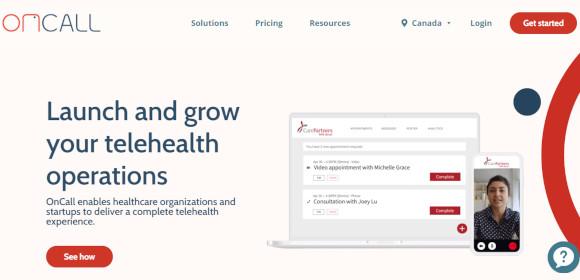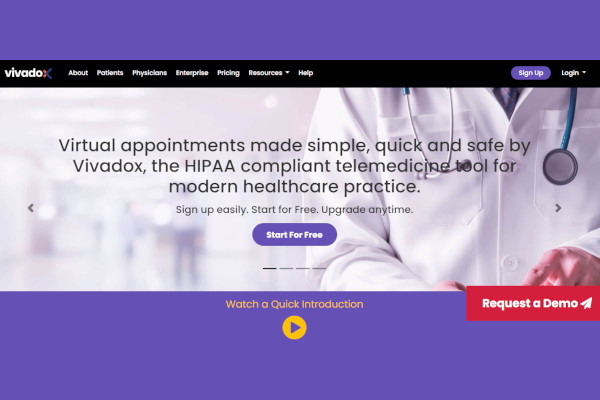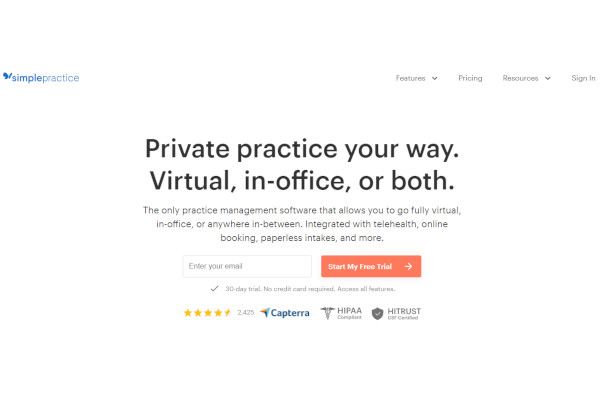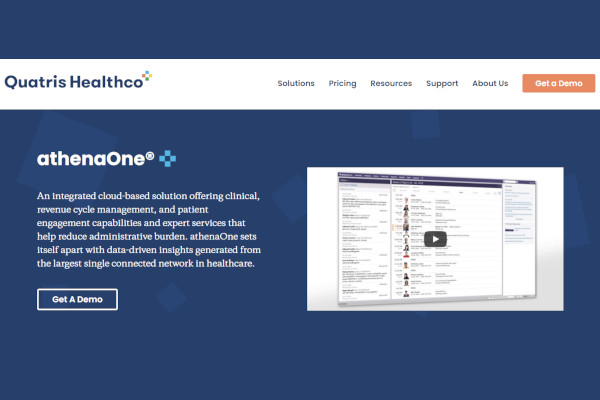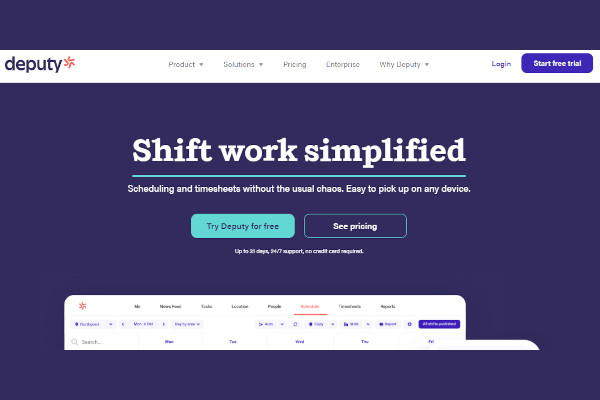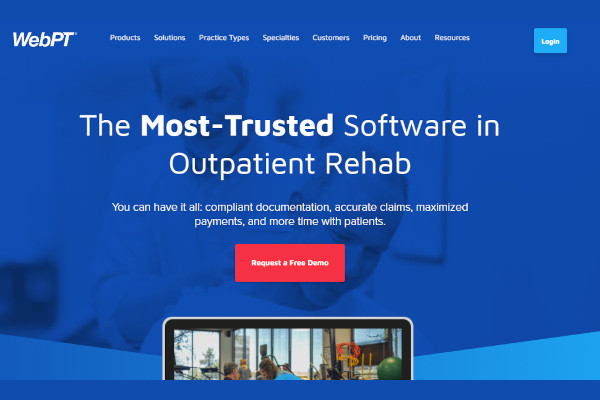Patients, regardless of their circumstances, deserve to get the care they need. To ensure excellent patient outcomes, they need to pay regular doctor’s visits. But what if they will encounter issues along their way and as they arrive in the health facility? From transportation inconveniences to long waiting lines and everything in between, it’s daunting to do in-person clinic visits. That is what telemedicine addresses. With telemedicine, healthcare professionals can perform medical services remotely, all with the help of electronic devices.
Telemedicine is such a great help in your practice. Do you think it’s time to implement an electronic medical care system? You will need an excellent software tool that’s right for your needs for a smooth implementation. Looking for the best choices? Check our list below!
10+ Telemedicine Software
1. TechRadar
2. eHealthFlex
3. Vivadox
4. SimplePractice
5. TheraNest
6. athenaOne
7. Doxy.me
8. Deputy
9. WebPT
10. Modernizing Medicine
11. OnCall Health
What Is Telemedicine Software
Telemedicine software is the platform used by healthcare providers to connect with patients and perform evaluations, diagnoses, and treatments remotely. The software is integrated with a provider’s electronic health record (EHR) and scheduling systems.
Telemedicine leverages smart devices and electronic technologies to allow health professionals to provide real-time remote treatment and round-the-clock care. Health professionals across different health care specialties can utilize telemedicine software.
Benefits
The benefits of telemedicine for patients are obvious. How about that of the providers’?
Looking forward to implementing telemedicine in your practice? Consider these benefits:
– increased efficiency because patient interactions are done via video conferencing
– increased appointment adherence, resulting in better health outcomes
– increased flexibility on when and from where can doctors see patients
– fewer no-shows and last-minute cancellations
Features
Telemedicine software products in the market have features that may be unique from each other. Whatever product you choose, make sure it has the following features:
– patient data encryption to remain compliant with HIPAA regulations
– integration with telecommunications-based technology
– adherence to state-specific laws regarding telemedicine and telehealth
– allow access to the patients’ individual EMR
– allows e-prescribing
Top 10 Telemedicine Software
1. Doxy.me
Doxy.me is a simple, free, and secure telemedicine solution. More than 700,000 users choose Doxy.me to provide virtual care online, at any distance.
Doxy.me has 50 employees and makes $9M in revenue.
2. Updox
Updox is a telemedicine solution trusted by over 470k users, 68k physicians, 150 million patients, and 150+ EHR integrations. Updox has 130 employees and makes $17M in revenue.
3. SimplePractice
SimplePractice is a top-reviewed practice management platform known for its clean interface. Its features include a fully paperless patient intake process, custom notes and forms, free appointment reminders, and more.
SimplePractice has a company size of 86 employees and makes $18M in revenue.
4. Mend
Mend VIP offers a solution with features that allow patients to arrange schedules on their own, enable providers to offer medical services virtually, and help providers remain HIPAA compliant. Further, Mend’s application’s features also include automated SMS, electronic forms, and a 23-second response from Mend representative round-the-clock.
Mend VIP has 31 employees and makes $5M in revenue.
5. Klara
Klara was founded in 2013 with a mission to improve healthcare communication and enhance the quality of care patients receive. Klara has a company size of 88 employees and makes $8M in revenue.
6. OnCall Health
OnCall Health is a virtual care program management solution that is a HIPAA and PIPEDA compliant. This solution offers virtual patient communication through video conferencing (one-on-one or by group), message appointments, and automates the entire patient-provider experience. OnCall Health has 50 employees and makes $7M in revenue.
7. VSee
VSee is specifically designed to simplify the healthcare user experience in video conversations, texts, chats, document-sharing, and more. VSee has 37 employees and makes $7M in revenue.
8. RevenueWell
RevenueWell is a digital marketing and communication platform that is a smart, easy-to-use tool that helps busy dental practices to attract new patients, streamline communication, and grow production from existing patients. RevenueWell has 115 employees and makes $23M in revenue.
9. Teladoc
Teladoc Health is a leader in global virtual care and helped millions of people resolve their healthcare needs with confidence.
10. ScriptPro Telepharmacy
ScriptPro Telepharmacy serves as a conduit for pharmacist-patient connection anytime, anywhere. This solution allows pharmacies to conduct high-quality, safe, and efficient telepharmacy operations. ScriptPro has a company size of 800 employees and makes $140M in revenue.
FAQs
What Is the Difference Between ‘Telemedicine’ and ‘Telehealth’?
Telehealth is specifically talking about clinical services provided remotely. Telehealth, on the other hand, refers to a broader scope of remote health care; it can cover both clinical and non-clinical services.
How Does Telemedicine Work?
Calls during remote medical appointments are always private. Similarly, with a routine in-person clinical visit, the provider asks about the patient’s health history, medications, and vital signs.
How Can I Get Access to a Virtual Doctor Visit?
Some virtual appointments are accessible through a simple link, sent via SMS or email. The link will route you to a video conference. Other virtual appointments may require you to log onto the patient portal, then connect you to the doctor.
Technology is continuously bringing us closer. Likewise, patients are now getting access to healthcare services wherever, whenever with the help of telecommunications devices. Thanks to telemedicine, patients and health providers are given a conduit for quality service and patient-centric care. Want to build the same experience for your practice? It’s time you implement telemedicine.
Related Posts
10+ Best Chemical Software for Windows, Mac, Android 2022
12+ Best Vulnerability Scanner Software for Windows, Mac, Android 2022
4+ Best Bundled Pay Management Software for Windows, Mac, Android 2022
10+ Best Trust Accounting Software for Windows, Mac, Android 2022
10+ Best Patient Portal Software for Windows, Mac, Android 2022
13+ Best Virtual Reality (VR) Software for Windows, Mac, Android 2022
12+ Best Bed and Breakfast Software for Windows, Mac, Android 2022
15+ Best Resort Management Software for Windows, Mac, Android 2022
14+ Best Hotel Channel Management Software for Windows, Mac, Android 2022
12+ Best Social Media Monitoring Software for Windows, Mac, Android 2022
10+ Best Transport Management Software for Windows, Mac, Android 2022
10+ Best Other Marketing Software for Windows, Mac, Android 2022
10+ Best Top Sales Enablement Software for Windows, Mac, Android 2022
8+ Best Industry Business Intelligence Software for Windows, Mac, Android 2022
10+ Best Insurance Agency Software for Windows, Mac, Android 2022
